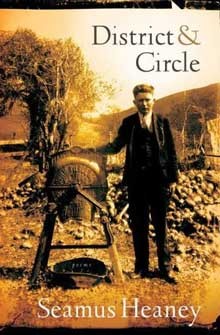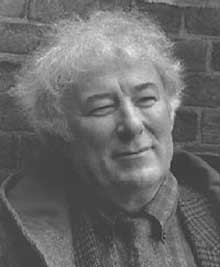John Freeman interviews Nobel Laureate Seamus Heaney
Seamus Heaney has always been something of a mystic when it comes to language. Accepting the 1995 Nobel Prize for Literature, the Irishman described how the voices he overheard on the radio as a child were like portals in time. These exotic sounds coaxed him into a “journey into the wideness of the world,” he wrote in “Crediting Poetry,” his Nobel lecture. “This in turn became a journey into the wideness of language, a journey where each point of arrival ... turned out to be a stepping stone, rather than a destination.”
And what a journey it’s been, from a 50-acre cattle farm in Northern Ireland to Harvard University and Stockholm and onto the international circuit of poetry readings. Unlike some writers, Heaney has not rested on his laurels. Since winning the prize, he has published four poetry collections and three works of prose, and has busily plied his trade as a translator. His rendering of Beowulf won the 2000 Whitbread award in England, where it was also a bestseller.
And now it would appear that Heaney has come full circle. Forty years after he made his poetic debut, Death of a Naturalist, Heaney sits in an armchair at Manhattan’s Hotel Wales. The 66-year-old poet has spent the past week reading his verse in Kentucky, San Francisco, New York, and Toronto, a journey so speedy he hasn’t even brought a book along to read. He doesn’t have the time. “You know this is awful,” he says, “but I find it’s a great time to get caught up on mail.”
The reason behind this grand tour is the arrival of Heaney’s 16th full collection, District and Circle, a ruminative swing through the poet’s life and work. Roaming over the decades, the book elegizes friends dead and gone, and describes farm implements with marbled specificity: turnip-shredders, anvils, and sledgehammers. To capture all this, Heaney uses a battery of forms — sonnets, prose poems, and even free verse — as if each exploration of a sound and a theme required a new tool.
“The book began as a contemporary experience,” says Heaney, “to, you know, go down into the Tube.” The title comes from two London subway lines. One enters the city, the other circles it; the tracks connect in central London. Heaney’s book has a similar structure: It journeys out into the world, only to circle back. “And then by the last sonnet I go down deeper,” says Heaney, “see my father’s face in the window, and cross a Styx down there into the underworld.”
While some people live their lives against the backdrop of pop culture, Heaney clearly maps his upon an older mythology — one that waffles between the literary and the nearly spiritual, the latter element growing larger ever since his 1996 volume, The Spirit Level. I ask Heaney about this change.
| Seamus Heaney |
“Remember, you are talking to someone who was attacked with religious language, with religious practice, from the age of 2 to the age of 22. You know, the typical curve of that `kind of` life is `to` secularize yourself as much as you can — in your 20s and 30s and 40s. Then when my parents died, the utter change — from life to death — made words like ‘spirit’ not at all frightening to me.”
Given the politics of Ireland, though, Heaney is much more comfortable returning to the ancient gods of yore and their intervention in the life of the Greeks. He speaks as casually about Odysseus as if he were a barman the next village over.
Diving deeper and deeper into Heaney’s life, District and Circle turns childhood haircuts and memories of the Troubles into a private mythology. Villagers appear on the road like messengers from long ago. The way the past and present collapse in these moments forms a kind of artistic sinkhole that Heaney explores again and again.
Heaney will not brook any talk about his poems speaking for a diminishing constituency, or a dying way of rural farm life. “We’ve got to remember this business is not to do with the data of the content,” he says, easily slipping into professorial mode. “It has to do with the effect of the language: William Wordsworth spoke of the grand elementary principle of pleasure.”
In order to keep his ear tuned to this imperative, Heaney has been retreating to a cottage in County Wicklow that he first began renting in 1972 with his wife. Heaney dedicates District and Circle to the home’s original owner, who finally sold him the place in 1987. “It really saved my life,” Heaney says. “I go down there and I just work. It’s got no phone, and sustenance of all kinds. It’s mature, it has got silence, it has got continuity also. I’m like a hen in a nest.”
Of the many beautiful poems in District and Circle, some of the finest concern the late Ted Hughes and Czeslaw Milosz, whom Heaney knew and admired. Knowing great poets has been one of his life bounties. “I met Elizabeth Bishop just before she died. I saw her many times. I also met `Robert` Lowell several times and had kind of a battering relationship with him. It’s not so much that you learn from `great poets`, it’s that you’re verified in that you seem to be taken seriously, you’re on the same rowing benches.” And now it would appear that Heaney is rowing alone, back to his own shore.
John Freeman is president of the National Book Critics Circle.


















